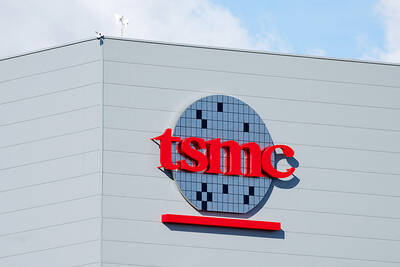China, the world’s biggest rare-earths supplier, cut the first-batch export quota for next year by 27 percent as overseas demand for the elements waned.
China Minmetals Corp (中國五礦資源), Aluminum Corp of China (中國鋁業) and other producers will be allowed to export 15,501 tonnes in the first round for next year, the Ministry of Commerce said yesterday on its Web site. The first-lot quota for 2012 was 21,226 tonnes.
China’s export restrictions on rare earths, a group of 17 chemically similar elements used in hybrid cars and wind turbines, have soured ties with the world’s major users, including the US and Japan.
The WTO agreed in July to probe China’s export limits and tariffs for rare earths following complaints that the curbs breached rules of global commerce.
“If overseas demand picks up next year, the government may increase its second-batch quota,” said Wei Chishan, a Shanghai-based analyst with SMM Information & Technology Co.
The first batch for next year will include 13,563 tonnes of light rare earths and 1,938 tonnes of the heavy variety, the commerce ministry said.
Shipments from China fell 3.1 percent to 13,014 tonnes in the first 11 months of this year because of substitution and declining overseas demand. Prices plunged 77 percent from their 2011 peak.
China usually issues the quotas in two batches. In August, the government allowed 9,770 tonnes for exports in the second batch for this year, taking the full-year limit to 30,996 tonnes, the highest in three years.

Taiwan Semiconductor Manufacturing Co (TSMC, 台積電) secured a record 70.2 percent share of the global foundry business in the second quarter, up from 67.6 percent the previous quarter, and continued widening its lead over second-placed Samsung Electronics Co, TrendForce Corp (集邦科技) said on Monday. TSMC posted US$30.24 billion in sales in the April-to-June period, up 18.5 percent from the previous quarter, driven by major smartphone customers entering their ramp-up cycle and robust demand for artificial intelligence chips, laptops and PCs, which boosted wafer shipments and average selling prices, TrendForce said in a report. Samsung’s sales also grew in the second quarter, up

LIMITED IMPACT: Investor confidence was likely sustained by its relatively small exposure to the Chinese market, as only less advanced chips are made in Nanjing Taiwan Semiconductor Manufacturing Co (TSMC, 台積電) saw its stock price close steady yesterday in a sign that the loss of the validated end user (VEU) status for its Nanjing, China, fab should have a mild impact on the world’s biggest contract chipmaker financially and technologically. Media reports about the waiver loss sent TSMC down 1.29 percent during the early trading session yesterday, but the stock soon regained strength and ended at NT$1,160, unchanged from Tuesday. Investors’ confidence in TSMC was likely built on its relatively small exposure to the Chinese market, as Chinese customers contributed about 9 percent to TSMC’s revenue last

With this year’s Semicon Taiwan trade show set to kick off on Wednesday, market attention has turned to the mass production of advanced packaging technologies and capacity expansion in Taiwan and the US. With traditional scaling reaching physical limits, heterogeneous integration and packaging technologies have emerged as key solutions. Surging demand for artificial intelligence (AI), high-performance computing (HPC) and high-bandwidth memory (HBM) chips has put technologies such as chip-on-wafer-on-substrate (CoWoS), integrated fan-out (InFO), system on integrated chips (SoIC), 3D IC and fan-out panel-level packaging (FOPLP) at the center of semiconductor innovation, making them a major focus at this year’s trade show, according

DEBUT: The trade show is to feature 17 national pavilions, a new high for the event, including from Canada, Costa Rica, Lithuania, Sweden and Vietnam for the first time The Semicon Taiwan trade show, which opens on Wednesday, is expected to see a new high in the number of exhibitors and visitors from around the world, said its organizer, SEMI, which has described the annual event as the “Olympics of the semiconductor industry.” SEMI, which represents companies in the electronics manufacturing and design supply chain, and touts the annual exhibition as the most influential semiconductor trade show in the world, said more than 1,200 enterprises from 56 countries are to showcase their innovations across more than 4,100 booths, and that the event could attract 100,000 visitors. This year’s event features 17